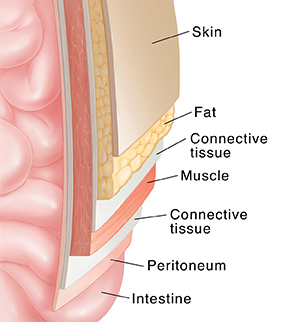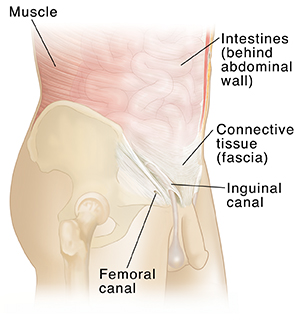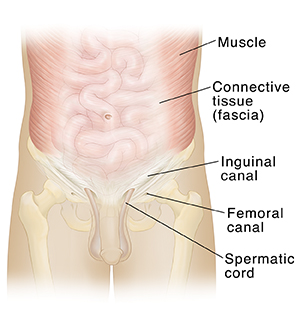Anatomy of the Abdomen and Groin
Anatomy of the Abdomen and Groin
The abdomen is the largest space (cavity) in the body. It lies between the chest and the pelvis, holding many of the body’s organs. These include the liver, stomach, and intestines. The groin is the area in the body where the upper thighs meet the lowest part of the abdomen. Normally, the abdomen and groin are kept separate by a wall of muscle and tissue. The only openings in the wall are small tunnels called the inguinal and femoral canals. These allow nerves, blood vessels, and other structures to pass between these two areas.
The abdomen and groin
Muscles. These are soft tissues. They enclose the intestines and other organs in the abdomen.
Connective tissue. These help bind the muscles together.
Inguinal canal. This is a tunnel in the groin. It is formed by layers of muscle and other tissues in the wall of the abdomen.
Femoral canal. This is a tunnel in the wall of the abdomen. It allows blood vessels and nerves to pass through the groin into the leg.
Spermatic cord. This passes through the inguinal canal and connects to the testicle.
Updated:
May 12, 2017
Sources:
Anatomy of the abdominal wall. UpToDate, Brigham N. The Gale Encyclopedia of Nursing and Allied Health. 2013;3:1-4., Evaluation of Inguinal Swelling in Children. UpToDate, Groin Hernia Anatomy. UpToDate, Micheli L. Encyclopedia of Sports Medicine. 2011;2:603-605.
Reviewed By:
Freeborn, Donna, PhD, CNM, FNP,Image reviewed by StayWell medical illustration team.,Lehrer, Jenifer, MD


